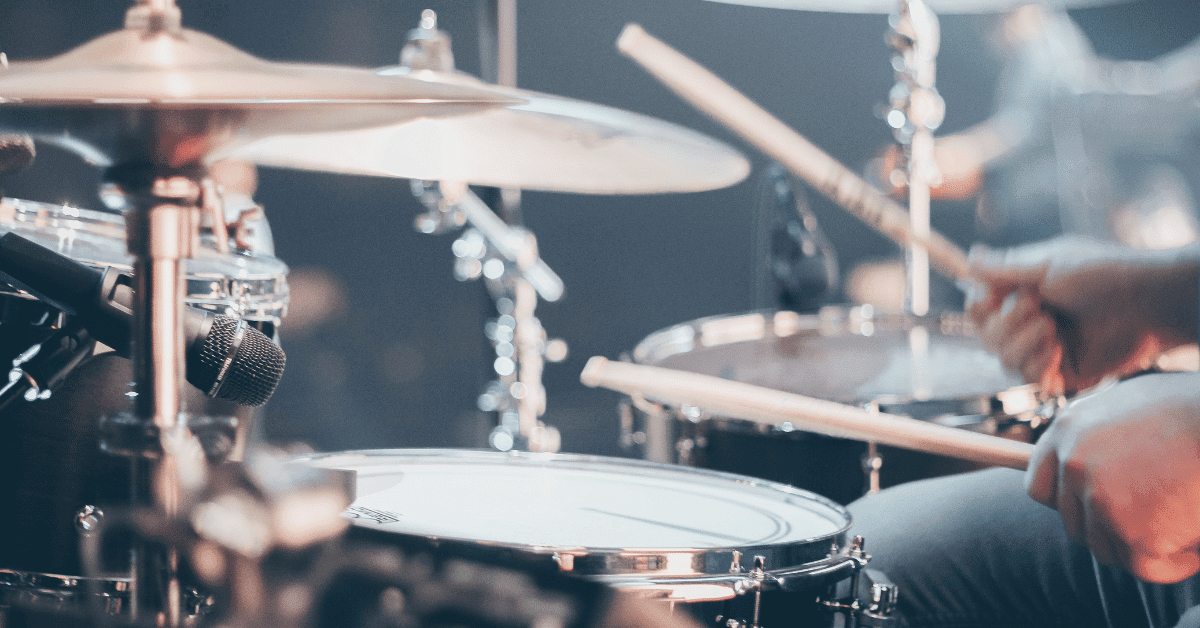This topic could be one of the most overlooked, yet very crucial areas when preparing to lead worship at church. For years, I never gave it much thought. I was focused on all of the things like getting good tone from my amp, what effects to use, and following the worship leader. Little did I know that the moment I made some easy changes, ALL of these things I mentioned would improve drastically. So in this blog I want to talk to you about the importance of a great monitor mix.
I want to first address why it can be so important to have a good monitor mix and then give you some personal tips and tricks that you can implement on your own.
As musicians playing in a band, we feed off of each other by what the other players are doing. This means that if you can’t hear what the other guys are doing, you likely won’t be complimenting what they are playing and vice versa.
When you have a good monitor mix and can hear everything happening, you will subconsciously make decisions that are informed on how your band mates are playing. You will also be able to hear your tone and effects in context to the song so that you can make informed decisions accordingly.
For example: If there are two guitar players and both of you are playing in the same register on the neck of the guitar, it will sound like you are fighting in the mix at front of house. If you have a great in ear mix, you will hear this immediately and adjust accordingly.
Another reason it is crucial to have a good mix is so that you can hear the dynamic of the band and worship leader. Leading worship has a lot to do with the dynamics. You don’t want to be smashing a snare drum when its a tender moment and the worship leader is trying to bring the dynamic down.
Having a good mix will keep you informed on the dynamic of each moment and let you know if the worship leader wants to go off script and flow. If a worship leader wants to go a certain direction that he feels the Holy Spirit is leading them, you want to be right there with him or her every step of the way. In my experience, the more worship leaders feel supported in this way, the more they will step out and follow the prompting in their spirit.
Now that we’ve established why a good mix is so important, let’s look at some practical ways to ensure you have a good mix every time you play.
Here is an overview of some things that can be applied to your mix whether you are are a drummer, singer, guitarist or any other musician.
1. Whoever is mixing monitors at your church is your best friend.
Be kind, patient, and encouraging to this person. Usually they are juggling a lot and a little will go a long way in being kind with them. If they feel appreciated, they will be more likely to make changes for you.
2. Don’t be afraid to make changes.
If you want something changed, go for it! I learn so much every week by making changes to my mix.
3. Make sure you can ALWAYS hear whoever is leading worship (and music director if you have one).
This is so important. You always need to not only hear what the singer is saying, but also the direction they are leading everyone.
4. Give yourself time to make a great mix.
Some days it can take time getting a good mix. The more you time you have, the more you can tweak your mix.
Now I’d like to share some general insights in to my personal approach to getting a great mix for guitar. Here are some things that I always do to ensure my mix is feeling great.
1. Always make sure you have plenty of headroom.
What I mean by this is don’t crank the master volume on your pack or mixer. I tend to set mine at about 60%. This is a good starting place.
2. Get a mix that sounds close to an album.
I like to have a mix that sounds like I’m playing with an album. Full, all instruments, and good energy.
3. I always run stereo guitars so that I can pan them wide left and right.
This gives me the ability to make my guitars wide so that other things like vocals and sit in the middle. If I am playing with another guitarist, I will hard pan my guitars left and right and then pan their guitar about 35-45 either left or right. This way I can hear what they are doing and we are not on top of each other in the mix.
4. Vocals in the middle.
I always like to be able to hear what the vocalist is singing and saying. So I make sure that when the band is full volume I have the vocals loud enough to understand them, but soft enough and when the band is quiet the vocals aren’t too loud. By nature, when the band is soft, I will be playing softer. So I want to be sure when I play soft I can hear what I’m doing and the vocals aren’t covering me up.
5. Volume of my guitar.
As I mentioned, I like for my guitar to be clearly audible at all times. If the band is down and I’m playing soft, I don’t want to be covered up by anything. When the band is loud I like to be JUST louder than everything else. If I’m too loud in my mix, I tend to play softer and more timid. If I’m too quiet, I tend to play too hard constantly. I like to find a good balance of digging in, but also have dynamic.
6. Click track.
The most important time I need click track is at the beginning of a song that I’m starting. As long as I can hear it then, I’m good. Once we get in to the song, I depend more on drums for timing and groove.
7. Music Director.
If I’m playing with a music director, I make sure that they are loud enough so that when the band is big, I can still here him/her very clearly. This is very important.
8. I’m very careful with keys.
I love keys in my mix. The lush pads and keys are so inspiring to me. The thing I have to be careful of though if that keys and guitars sit in the same frequency range. If I have too much keys, they will cover up my guitars. I usually have keys a little bit quieter than my guitar. I love the inspiration of keys, but not at the expense of not being able to hear myself.
9. Careful with bass.
Bass is also a great way to make your mix feel full. If I’m not careful though, I can mix too much in and it can get muddy very quickly. Same is true for the kick drum. If I find my mix is muddy, I go to one of these first and it usually fixes it. That or the keys/pads.
10.Crowd mics.
As much as I love hearing the crowd, I never have crowd mics on. As soon as I start mixing in the crowd, my mix gets very washy, muddy and thin sounding. If there is a special a cappella moment, I will take one ear out. I always leave on ear in though, because the music director may be giving direction to the band at any moment.
11. Finally drums.
Hear is a basic idea of how I mix the drums. Kick drum is in the middle. I have just enough of this so that I can feel the beat, but my mix isn’t muddy. Snare top and snare bottom in the middle. Snare bottom is a great way to mix in some sizzle in the snare if the snare sounds to dull. Hi hat very low and to the left. Rack tom panned hard left. Floor tom panned hard right. I like toms hard panned, but I am careful here to be sure they are not too loud to get in the way of my guitars. I have very little overheads, but they are hard panned left and right as well.
And those are some general insights into what I do every time I make a mix. This is just a starting template. I know it can seem like a lot, but once you start implementing some of these principles your mixes will continue to get better and better.
Check out How to Mix In Ear Monitors Like a Pro Part 2 for more professional tips on mixing IEM’s!
Let us know some questions you guys have on the subject. Looking forward to hearing how all the mixes turn out!
You may also be interested in these posts:
- How to Mix In Ear Monitors Like a Pro Part 2
- The “Secret” To Being A Great Electric Guitarist
- What Every Worship Leader Needs To Know About Electric Guitar (Part 1)
- 6 Things That Will Make You Sound Better Than New Gear
- How to Record Guitar Like a Pro [Even if You’re on a Budget]






